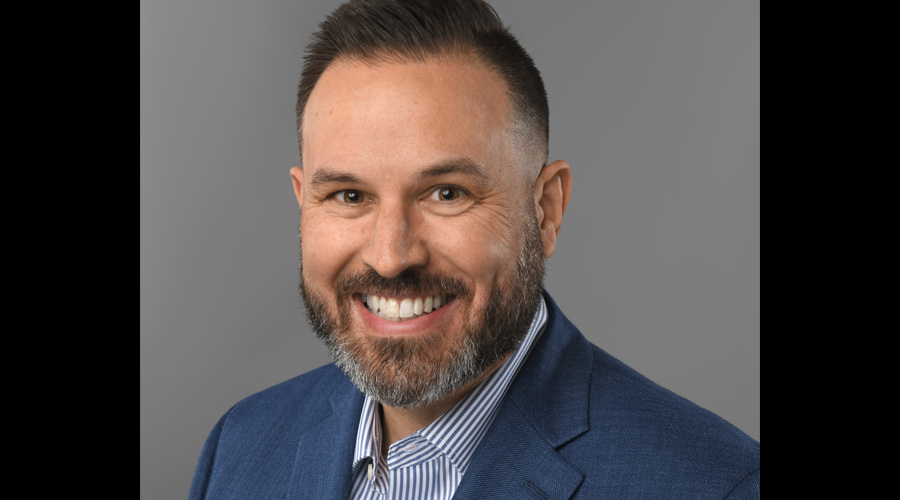Change Agent: Albert Manshum Transforms Advocate Health Care's Facilities
First part of a three-part cover story profiling Advocate Health Care's Albert Manshum.
Albert Manshum has a sharp eye for potential, and an uncompromising adherence to his vision. He is the senior vice president of operations, integration, and optimization for Advocate Health Care, the largest health system in Illinois with 15 million square feet of space, including 12 hospitals with more than 3,300 beds. In 2010, while he was the vice president of construction for Advocate, he had a realization that would completely alter the structure and philosophy driving facility operations at Advocate.
At the time, he had responsibility over construction activities across the system, as well as its office buildings. He chaired what he calls a facility council, gathering the operations leaders for each facility on a monthly basis to talk about what they were doing at their facilities.
“I started to realize that we were not making progress on facilities,” Manshum says. He had sites that were doing great things, but also a lot of sites that weren’t “moving the needle very much,” and weren’t taking the best practices they heard about from the more successful facilities back to their own. In particular, he was concerned that more wasn’t being done across the system on the sustainability and energy efficiency front. “So I went to our COO and said I would like to centralize the energy component of facilities, so that we could begin moving the needle,” he says.
Manshum put together a presentation detailing the potential savings from his proposal, as well as the environmental impact. His COO was impressed and gave his blessing, but also upped the ante. He wanted Manshum to evaluate the entire facilities operation. “That sent me back to the drawing board to look at our entire operation, everything we were doing,” he says. He started pulling data together. Where was Advocate spending money? What was the cost per square foot for facilities across all sites? “As soon as I pulled that financial data, it became apparent very quickly that there was a lot of variation out there.” The highest cost site was more than double the cost per square foot, once the numbers were normalized, of the lowest cost site. It became clear to Manshum that standardizing operations and metrics would yield significant savings. At the time, he estimated a potential cost savings of 10 percent.
He took his findings back to his COO, and facilities operations at Advocate Health Care have never been the same since. “He said, alright, we’re centralizing facilities,” Manshum recalls. Centralization began in 2010, and in the six years since the effort has yielded numerous wins for Advocate, such as a 27 percent savings in annual operating costs, and counting. “It’s been a huge success,” Manshum says.
Advocate lifer
An architect by training, Manshum was attracted to healthcare facilities from early on in his career. “I love the challenge of healthcare,” Manshum says. “It’s like a big puzzle, trying to put it together. For me, I like the challenge of solving a big problem. There are more problems to solve in healthcare than there are elsewhere.”
Manshum has been with Advocate for about 12 years. After working at a few architecture firms, he landed at the firm that became CannonDesign, and his primary client was Advocate, for which he worked on numerous projects at Advocate Lutheran General Hospital and Advocate Good Samaritan Hospital over the course of five years. When Lutheran General started moving forward with a $200 million patient care tower project, the hospital’s president campaigned to get Manshum to join the team in-house to manage the project. At first, he resisted, but it was too good an opportunity to pass up, he says. He came on board, and a year later became the director of construction.
He quickly rose through the organization, becoming vice president of construction in 2008. His current position, senior vice president of operations, integration, and optimization, became official January 2016, and gives him oversight of all support operations at the health system, adding on supply chain, food service, environmental services, clinical engineering, project management, cost management, and public safety to his duties.
Core strength
It was a very complex puzzle Manshum had set out to solve with centralizing facilities operations at Advocate. The first step was restructuring the reporting structure of the organization, making top-performing site directors into regional directors housed at a single location. Before 2010, the reporting structure was that the directors in each facility would report to the site leadership of each hospital, says York Chan, administrator of facilities at Advocate. Chan has been the tip of the spear in implementing the consolidation of facilities under one umbrella.
Getting the hospitals on board with giving up control to the corporate level was not an easy task, Chan says. “Initially, we had several hospitals that pushed back,” he says. A couple of hospital presidents were concerned that by centralizing, nothing would work. They’re now probably the biggest cheerleaders of the process, Chan says.
At the corporate office reside all of the centralized function leaders, along with any support that they need that touches all of the sites. No jobs were lost due to the centralization, as outsourced work was brought back in-house. In fact, centralization allowed Manshum to create resource positions that did not previously exist, such as hiring an energy manager, who has oversight of energy procurement, optimizing energy utilization, and energy benchmarking. “When each hospital was a standalone, we were not able to have somebody that specifically does a deep dive and focuses on energy,” says Chan. “That’s a system resource that Al was able to create when he created the (new) structure. And all 12 hospitals are able to share in the knowledge base, and they don’t have to worry about how to come up with the energy plans.”
Over the last six years, Advocate has been able to decrease energy consumption throughout the system by more than 20 percent, Chan says. The star in that effort is Advocate Illinois Masonic Medical Center in Chicago, a 108-year-old hospital with an Energy Star rating of 98.
Another area where a centralized resource was created was in the safety program, the most recent department to be centralized. A manager of regulatory compliance was brought on board, Chan says, with oversight of all safety officers and mandatory testing, such as fire alarm testing and medical gas testing. “We’ve standardized that all under one manager,” says Chan. “Our success rates for our accreditation process have been phenomenal.”
Centralizing has allowed a culture of transparency to grow at Advocate, which was a bit of learning curve for some. Having the facilities leadership in one location has also facilitated spreading best practices throughout the system.
In addition, Manshum’s team is about to roll out a tool to allow the sites to compare and contrast against one another in a normalized fashion, he says, on cost, safety, and service. The tool will also allow sharing of action plans between the sites. “When something good happens somewhere, it is quickly adopted by the other sites,” Manshum says.
Related Topics:














